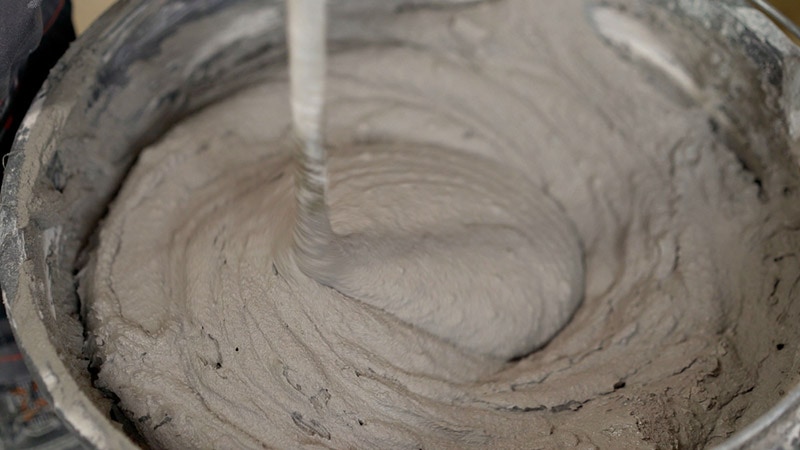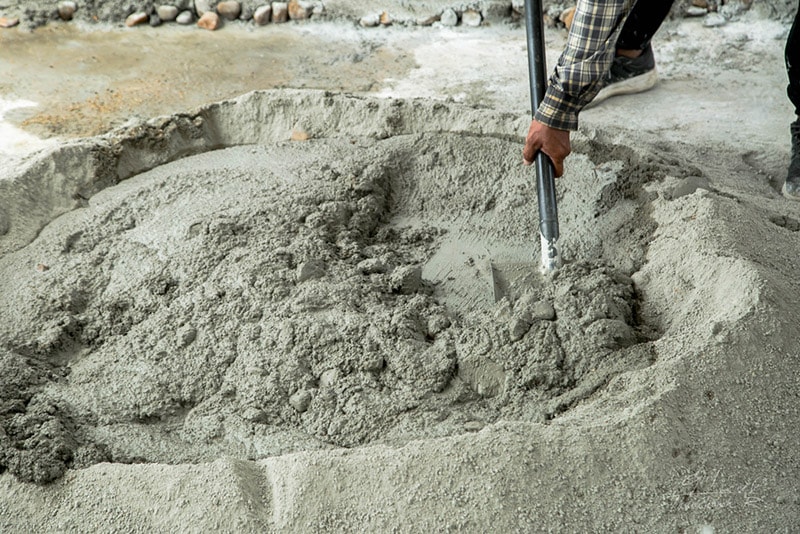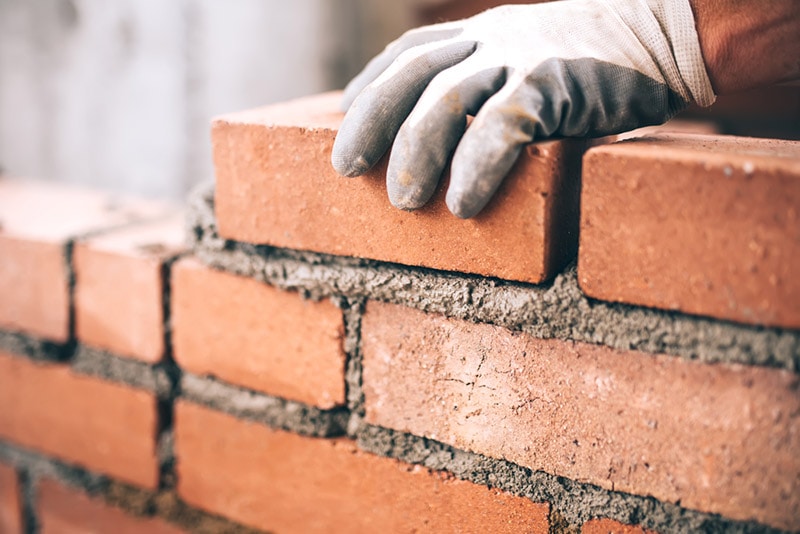What Is Mortar? All You Need to Know!
-
Pete Ortiz
- Last updated:

Mortar is made by combining cement and sand and is used primarily as a means of adhering bricks and building blocks together. There are different types of mortar according to how it will be used and the type of material it will be used with. Mortar differs from concrete, which also contains gravel and is used to make foundations and slabs, and cement, which is a fine powder made of a variety of minerals, and is never used alone but is a constituent in making both concrete and mortar.
Topics discussed in this article:
How Does It Work?
Mortar is made by combining sand with cement, which itself is made up of mineral elements like limestone, clay, and silica sand. Water is added to the mixture to create a slurry that will harden and cure. It is most commonly used as a glue to hold bricks together. It is also used in the same way with concrete and other building blocks. Mortar is not usually used as a building material itself and pre-mixed mortar is usually bought in bags and mixed with water to activate.
Ancient mortar was made using gypsum, but this leaves a soft mortar, and most modern mortar is Portland mortar, named for the color of the rocks on the Island of Portland, off the English coast. Instead of gypsum, modern mortar is more commonly made using Portland cement, which is harder and more durable than gypsum mortar. The most commonly used types of mortar today are S, N, and M.

What Are the Different Types of Mortar?
- Gypsum Mortar – In Ancient Egyptian times, mortar was made using gypsum rather than cement. Gypsum is a soft mineral, and its use created a soft mortar with very low structural or load-bearing strength. Gypsum mortar is rarely used today.
- Portland Cement Mortar – Portland cement mortar is the most common type of mortar today and uses Portland cement rather than gypsum. Portland cement was first used in the 19th Century and named because it has a similar color to the rocks on Portland Island. It sets quicker than lime cement, therefore being more practical for construction work.
- Premixed Mortar – It is possible to mix sand, cement, lime, and water, to create mortar yourself. However, premixed mortar is generally considered a more practical and simpler solution. With premixed mortar, you simply need to add water to activate the cement.
- N – Portland cement mortar is graded according to its strength. N-grade mortar is rated to offer 750 pounds of strength per square inch and is used for exterior and interior applications but is not recommended for use below ground.
- O – O mortar mix has a compressive strength of 350 psi and is used for interior work, above ground. It is also used for repointing because it is softer and easier to apply than stronger alternatives.
- S – S mix has a compressive strength of at least 1,800 pounds per square inch. It is used below ground level because it can withstand pressure from the soil.
- M – M mortar has a strength of at least 2,500 psi and because it has a similar compression strength to natural stone, it is often used to bind natural stone blocks. It can be used below the ground.
- K – K mortar mix is rarely used because it has a very low compressive strength of just 75 psi. It is usually only used to restore old buildings.
- Thinset Mortar – Thinset mortar is not really a mortar but is actually an adhesive. It does combine cement with water and fine sand, hence sometimes being described as mortar. It is used to adhere tiles to walls and similar applications because it is moisture-resistant.
Where Is It Used?
Mortar is a bonding material that is used in construction of all types. It is used to build residential, commercial, and industrial property, as well as infrastructure. It is also used in some landscaping and gardening projects, for example as a means of anchoring fence posts into the ground.
It is also used to make repairs to damaged brickwork, especially in repointing, which is the reapplication of brickwork mortar that has become damaged or worn over time.
Although rare, mortar may be used for molding and to create ornamental pieces. Typically, other materials such as concrete are preferred for this purpose.

Advantages of Mortar
- Binding – Mortar is a binding material. Once activated it is applied between layers, typically bricks or building blocks, and adheres to the surfaces of the building material. Once it dries, it keeps the building materials in place.
- Provides Stability – Because the mortar is somewhat liquid, it fills out spaces and ensures an even distribution between layers of structure. This means that the load of the structure is evenly distributed across the bricks thereby improving stability and reducing the chances of damage.
- Easy To Work With – Mortar is easy to work with. It can be applied using a trowel or other tools, bricks can be worked into position, and it doesn’t take too long to dry and create a stable structure.
Disadvantages of Mortar
- Carbon Footprint – Cement and other constituent ingredients of mortar need to be dug up and transported, which can mean a substantial carbon footprint for this building material. However, this is likely true for alternatives as well.
- Countryside Destruction – Limestone is one of the main ingredients in the cement used to make mortar, and this needs to be dug up or mined. The digging up of limestone and other minerals can destroy the countryside in those areas where it is mined from.
- Difficult To Use in Extreme Conditions – If weather conditions are too hot, too cold, or too wet, it affects the curing time of the concrete. In some cases, this means that the mortar remains wet for too long, but it can also mean that the mortar dries before it is used. This can be negated by mixing and leaving mortar before application, or by mixing smaller amounts.
Frequently Asked Questions (FAQs)
Is Mortar the Same as Cement?
Mortar is not the same as cement. Cement is one of the constituent ingredients of mortar but is combined with sand, lime, and water to create the bonding material.
What Type of Mortar Do I Need?
There are several types of mortar and the type required will depend on whether it will be used above or below ground and the amount of weight the brickwork or stonework will need to support. Type N mortar mix is usually considered the best all-rounder and the one that most likely fits your needs.
How Thick Should Mortar Be Between Bricks?
Generally, it is recommended that the mortar between bricks be at least a quarter of an inch thick. This ensures good bonding while still allowing the bricks to take the majority of the load.
Conclusion
Mortar is most commonly used in brickwork and is made of a combination of cement, sand, and water. It is possible to mix mortar yourself or have premixed mortar that just needs to be combined with water. There are different types, as well as various grades of mortar, and the right one is determined by the amount of compressive strength required from the mortar and brickwork.
Featured Image Credit: Sidorov_Ruslan, Shutterstock
Contents



